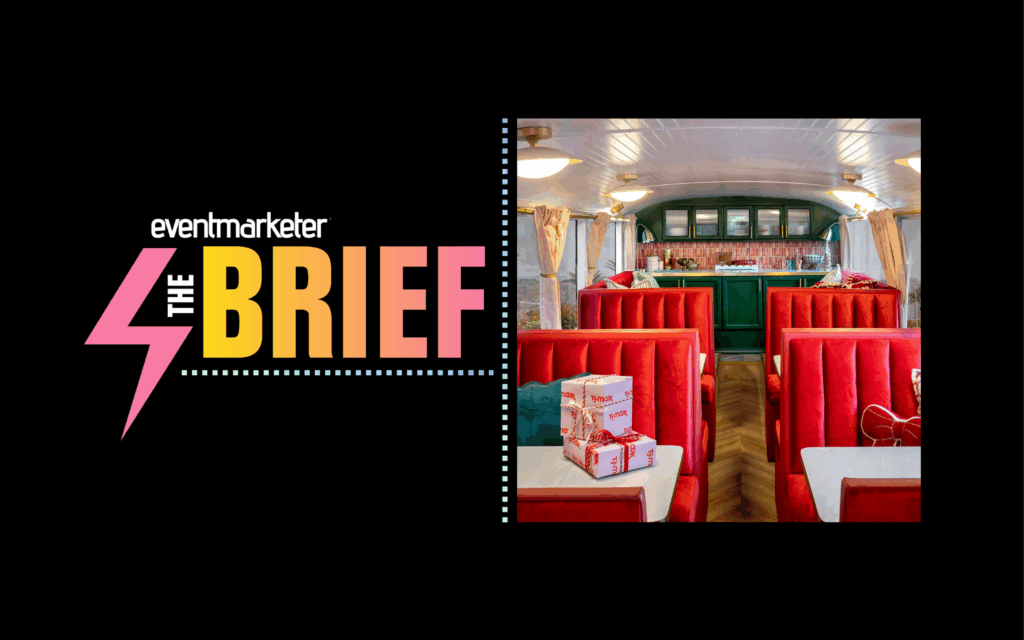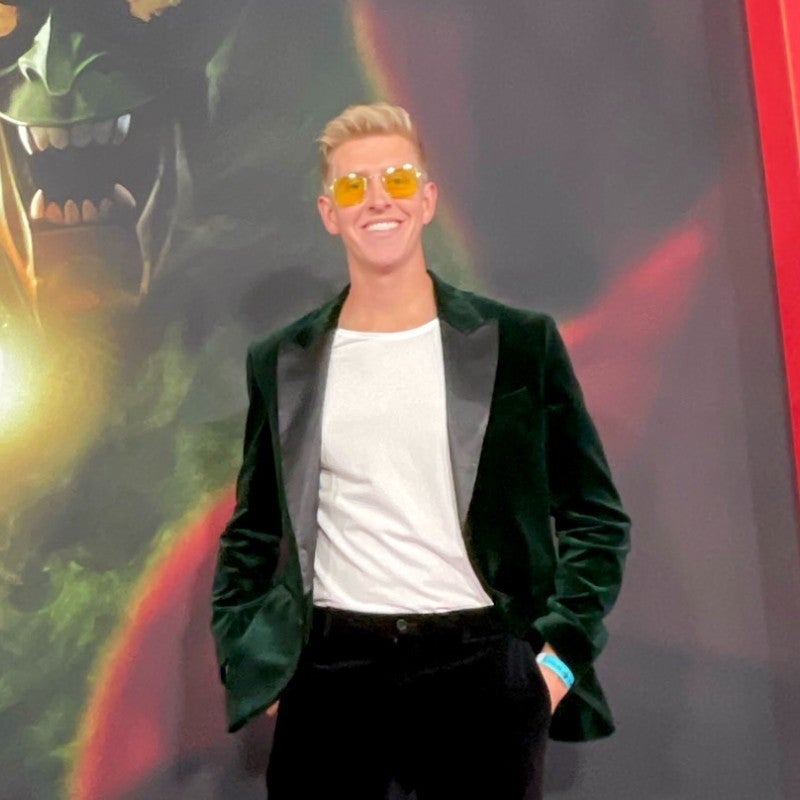
Out-of-home promotional messages are an American tradition as old as the Republic itself: Handbills posted in Boston in 1773 told citizens that tea with import taxes on British ships “never should be landed in this province” in a pointed paragraph that led to the celebrated Boston Tea Party.
Fast forwarding to more modern commercial signage, in 1941 Camel captured consumers’ imaginations in New York City’s Times Square with the image of an American aviator appearing to puff on a cigarette. That steam-powered sign endured through various permutations for 25 years. And while the Camel sign has faded into commercial history, Times Square signage persists today with a mesmerizing mélange of pulsing electronic promotions.
Clear Channel Spectacolor is one of the major players in the Times Square corridor, which extends from 42nd Street to 47th Street along Broadway and Seventh Avenues. Its most innovative space is the CNN billboard at 47th Street, which carries a CNN news crawl in the bottom third of the space and a sequence of 30-second and 15-second spots in a large HD display that dominates the screen.
The sign is used, in part, for an interactive word game called Jumbli, which AT&T sponsored during a two-month campaign last fall. Positioned adjacent to the refurbished Duffy Square and equipped with a set of red Plexiglas risers that light up at night, the campaign generated 300,000 games played via wireless handsets and on a Facebook page during the activation period, according to Harry Coghlan, president of Spectacolor.
Coghlan thinks it demonstrates the potential power of a campaign that integrates diverse media.
“If you’re playing when the game is live in Times Square, your words are shown in Times Square. It was a very powerful message on how to combine the Web with home and mobile.”
The CNN scrawl includes a call to action for passers-by, who can text in through cell phones to hear the cable news channel’s audio feed. And the Duffy Square risers enable PC users to access audio of the electronic messages online through the WiFi network that Spectacolor maintains in the area.
“The dwell time increases the opportunity to see the ad spots run,” Coghlan says. “It becomes a very effective opportunity for an advertiser.”
That’s particularly true for movie studios, which recently plugged “Pink Panther 2” and “Quantum of Solace” in the space.
While out-of-home advertising showed marginal year-to-year gains during the first two quarters of 2008, revenue fell 6%, to $1.62 billion, in the third quarter, and produced flat results of $5.45 billion over the first three quarters of the year.
The bright spots in the third quarter were a 17.5% rise in restaurant ads, fueled primarily by fast food restaurants; a 13.8% increase in political ads driven by the presidential election campaign; and a 10.8% increase in media and TV ads.
Media ads dominate Times Square, where ABC, NBC and MTV all maintain a presence with screens promoting their programming with video clips. Van Wagner used NBC’s prominent street corner screen to activate a campaign last year underscoring the network’s relationship with Sharp Electronics.
“Out of home constantly reinvents itself as engaging and entertaining. It’s there 24/7 and can’t be zapped,” says Hollie Friedland, Van Wagner group marketing director.
Van Wagner’s current Pepsi “spectacular” billboard’s “Refresh Everything” message of hope and change aims at resonating with passers-by.
“It’s an excellent example of effective creative and it taps into the mood of the time,” Friedland says.
At the south end of Times Square, Walgreens has created an electronic display above its store to boost the brand and tout new products and seasonal specials.
“It’s a national and international branding opportunity for Walgreens. As we expand our presence in New York, it serves as a beacon,” says Walgreens spokesperson Tiffani Washington.
The store has been one of Walgreens’ top performers since its opening with the sign last November.
In lower Manhattan’s East Side, Van Wagner mounted a text-to-vote campaign for A&E’s “Gene Simmons’ Family Jewels” series with a billboard inviting passers-by to vote on whether Simmons had been faithful to his wife.
It also devised a phone kiosk stunt for JP Morgan Chase during last fall’s US Open Tournament, inviting callers to send a text message for a shot at tourney tickets; the process also demonstrated the bank’s text response system and directed consumers to its Web site.
“The presence of out-of-home promotion is important because with media no longer in silos, it’s an excellent vehicle to move consumers to action,” Friedland says.
MEASURED RESPONSE

Promotions that prompt responses provide one reliable metric to measure the impact of outdoor marketing.
Next month, the Traffic Audit Bureau, with the support of Clear Channel, CBS Outdoor, Lamar Advertising and others, will be implementing a $25 million Eyes On Impression system in 200 markets that will gauge the number of people passing in vehicles or on foot who look at a particular sign. It will combine full-motion video detection technology with destination surveys in 15 markets. Detailed surveys in the top-10 markets nationwide will also use GPS or computer-assisted interviewing to cull information.
“In an age of major fragmentation, we’re still able to reach whole segments of the DMAs,” says Jodi Senese, executive vice president of marketing for CBS Outdoor. “Because of the amount of time people are out of home these days, we are a high-frequency medium.”
Movie promotions continue to be a strong category for billboards as part of larger, integrated campaigns, according to Senese, who says there has been erosion in the traditionally strong automotive and banking categories. She adds that CBS Outdoor is currently launching a Web-based system called Wannabillboard.com, which will enable local businesses to get primers on the medium, find locations of CBS Outdoor’s 500,000 signage sites nationwide, and view agency templates for their respective product categories.
As players in the big-signage arena employ more sophisticated technology approaches, smaller guerrilla out-of-home campaigns have also sprung up.
“Surprising people, putting things where they don’t belong, is part of what makes it effective,” says Matthew Glass, CEO of Grand Central Marketing.
GCM recently ran a campaign to promote HBO’s “Eastbound and Down,” an original comedy about a former Major League pitcher reduced to substitute teaching in his hometown middle school. GCM street teams pasted 10,000 clings looking like a baseball embedded in shattered glass and carrying the legend, “Kenny Powers was here, motherf&@#ers,” in sports bars in New York and Los Angeles to promote the series.
Last year, GCM turned Grand Central Terminal’s Vanderbilt Hall into a virtual Africa experience to promote an issue of National Geographic, with oversize photos and a live webcam from a watering hole in Botswana randomly transmitting images of gazelles or rhinos.
Attack Marketing recently ran a campaign for Morgan Hotels in New York and Los Angeles that played off the current economic chaos with posters reading, “Hey Downturn, Up Yours.” Attack also used 10-by-10-foot projections on walls near hot night spots with the same message.
“It speaks louder to an urban audience,” says Attack account supervisor Ivan Barnes. “During this downturn, people are looking for something that’s outside of the box, and cost-effective.”

NO CLEAR SIGNS AHEAD: DIGITAL BILLBOARDS ARE UNDER FIRE
Away from Times Square, the future for fast-changing electronic billboards is turning out to be full of static.
In the continuing nationwide controversy about the flashy commercial electronic eye candy, Los Angeles’ digital-billboard brouhaha has provided new momentum for a statewide moratorium.
Early last month, the city council voted to back a two-year moratorium introduced in the California Assembly on the sophisticated signage.
The council’s proposal would prohibit digital billboards from being built, enhanced or converted from traditional billboards until Jan. 1, 2012.
The moratorium aims to allow time to consider results from several federal studies currently examining the issue, including one by the Federal Highway Administration that measures motorists’ eye movements as they pass the signs.
As in other states, legislators contend that the signs distract drivers on busy thoroughfares. Digital billboards typically flash sequential electronic commercial messages of several seconds’ duration. Fines of $3,500 a day for violating the ban are part of the measure.
CBS Outdoor and Clear Channel Outdoor, two companies that own much of the billboard inventory in L.A., both object to a statewide stop on sign conversions.
Clear Channel Outdoor has said it is “working with the City of Los Angeles to arrive at a regulatory structure that is sensitive to the need to avoid billboard over-saturation.” At the same time, it asks for recognition of the importance of outdoor ads to the economic vitality of the community.
An Arbitron survey on behalf of the Outdoor Advertising Association of America indicated that two-thirds of L.A. County residents are indifferent to the digital billboards or don’t mind them, while 16% like them. Nearly half (47%) found them attractive, and 42% said they made the commute more interesting.
Last fall, a study by California-based consultancy The Active Network, which was commissioned by the mayor’s office, recommended that the city license 15 new electronic signs on municipal turf to generate a $4 million revenue windfall by 2011.
“[Digital billboards] represent a relatively small fraction of the total billboard space in Los Angeles,” says Jeff Golimowski, an OAAA spokesman. Of the 6,000 to 7,000 billboards in L.A., just 80 of them are digital, he adds.
Golimowski contends that the appearance of the billboards is the primary issue.
“We believe [digital billboards are] being objected to on aesthetic grounds. They don’t like the way these look,” he says.
On a related front, the city is seeking to curtail the proliferation of “supergraphic” vinyl signs that have appeared on buildings since a temporary ban on billboards was imposed by the city council in December. The Los Angeles Fire Department estimates that 100 illegal signs adorn city structures, and 20 building owners have been ordered to remove them. Violators of the billboard ordinance are subject to monthly fines up to $2,500.
FINDING COMMON GROUND
Other metro areas facing the same fight over digital billboards are finding ways to compromise, in the face of objections from the outdoor companies.
Two years ago, the St. Paul, MN, planning commission ultimately ruled that digital billboards could be erected, provided several “old-fashioned” static billboards came down for each new one. That ruling mirrored a compromise struck in suburban Minnetonka, where Clear Channel was required to remove two static billboards for each digital one it erected.
Cleveland, OH, currently requires the Minnetonka two-for-one approach to converting any of its 1,000 billboards — a rule Clear Channel wants the city to reconsider. In fact, the city is contemplating a moratorium on new billboard construction; a moratorium in Akron, OH, expired just last month.
Pittsburgh officials have been wrangling over the issue since last April, when the city council declared a six-month halt to erection of any new billboards in the city. Lamar Advertising is currently embroiled in a zoning battle over a 1,200-square-foot electronic sign it wants to plant in downtown Pittsburgh.
And while Milwaukee’s common council voted last spring to permit digital billboards to change messages every eight seconds, it also imposed a requirement for special-use permits and possible public hearings each time a new electronic sign replaces an old billboard more than 1,000 feet from a freeway.
Finally, last month the Tampa, FL, city council seemed poised to okay a settlement on a long-standing dispute over billboards. The solution would have settled 13-year-old lawsuits by CBS Outdoor and Clear Channel by allowing the outdoor ad companies to build electronic billboards to within 200 feet of residences. In exchange, companies would have been required to take down static billboards in selected “scenic corridors” around the city.
But on Feb. 12, Mayor Pam Lorio sent the outdoor companies and the city attorney back to the negotiating table.
“We want to reduce visual blight in our community,” she said in an e-mail to both sides.
— Richard Tedesco



